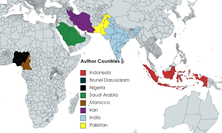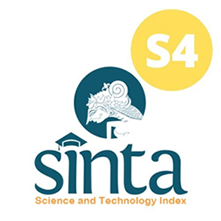Building of Anti-Bacterial Smart Sterilization Room Based on Internet of Things Using PIR Sensor and Its Quality Assurances
Abstract
The dangers of bacteria can cause health problems or infections of the respiratory tract. This research is related to the design of an anti-bacterial smart room sterilization system based on the Internet of Things (IoT) using a Passive Infrared Receiver (PIR). This study aims to sterilize with a monitoring and security system with PIR sensors and Blynk platform. Tool testing is carried out by taking 7 data from 1 object with 3 scanario which are sterilization without an object, sterilization by detecting objects, sterilization by detecting objects which is back to the room. In this system each condition is monitored on the Blynk platform. The advantage of this system is managed and monitored safety sterilization process remotely by Blynk. This tool has also gone through measurement quality assurance testing by adopting ISO 17025 including sensitivity, selectivity, precision, working range , tool toughness, and measurement uncertainty. The quality of service (QoS) test in this system gets an average delay of 122 milliseconds, throughput of 1045 bit/s and packet loss of 0.06%. This sterilizer can be monitored and operated remotely and is equipped with a security system.

This work is licensed under a Creative Commons Attribution-ShareAlike 4.0 International License.
Authors who publish with this journal agree to the following terms:
- Authors retain copyright and grant the journal right of first publication with the work simultaneously licensed under a Creative Commons Attribution License that allows others to share the work with an acknowledgement of the work's authorship and initial publication in this journal.
- Authors are able to enter into separate, additional contractual arrangements for the non-exclusive distribution of the journal's published version of the work (e.g., post it to an institutional repository or publish it in a book), with an acknowledgement of its initial publication in this journal.
- Authors are permitted and encouraged to post their work online (e.g., in institutional repositories or on their website) prior to and during the submission process, as it can lead to productive exchanges, as well as earlier and greater citation of published work (See The Effect of Open Access).











